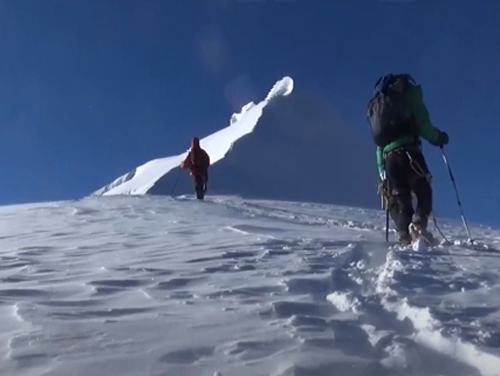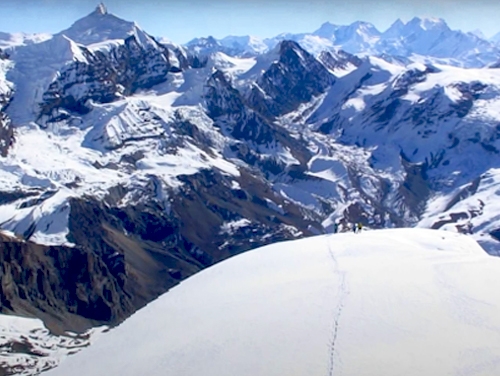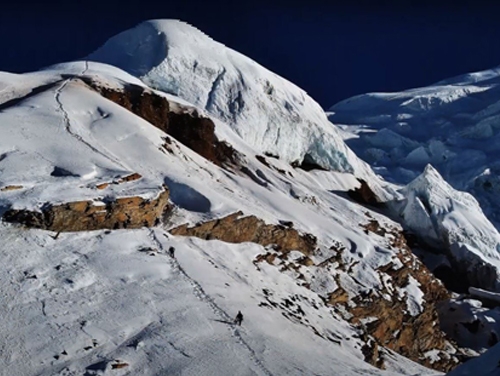Summary of Tent Peak Climbing
Tent Peak climbing is also known as ‘Tharpu Chuli‘. Tharpu Chuli Peak Climbing is one of the best trekking peaks in Nepal. Tent Peak gets its name from the fact that the mountain's summit mimics the shape of a tent.
With a height of 5663 m, the tent peak is a relatively low altitude summit. Climbing this summit appreciate is a wonderful trekking peak on the lap of Annapurna I and Singa Chuli Peak, which is a stunning Trekking peak on the glim of the Annapurna Range Himalayas.
A breathtaking 360-degree picture of the surrounding Annapurna massif, a gorgeous outlook, and numerous Annapurna region peak snowcaps are also highlights of the journey. Tharpu Chuli's peak offers amazing panoramic views of the entire Himalayas, including Annapurna I (8091m), Annapurna III (7555m), Annapurna V (7525m), Annapurna South (7219m), Gangapurna (7455m), Fang (7647m), Fishtail (6997m), Hiunchuli (6331m), and Singu Chuli (6501m).
How to Reach Tent Peak climbing ?
The trek to Tharpu Chuli Peak begins with a trip to Pokhara. A short journey from Pokhara takes us to Nayapul. From here, we begin our hike to the ethnic Gurung village community, passing through a rich forest of Rhododendrons, Oaks, and Pines on our route to Ghorepani. Then we continued on to Annapurna Base Camp. We continue our journey towards the High Camp. We take a day off that day to acclimate and prepare for the summit trek.
There are several tricky areas along the trip that are led by our expert Sherpa guide. During that period, we employ ropes, crampons, and ice axes, as well as our professional Sherpa guide. We climb all the way to Tharpu Chuli Peak. After successfully climbing Tharpu Chuli, we return to Annapurna Base Camp.
Then, we return to the Dhampus Phedi and take a trip to Pokhara. Our memorable memory concludes with Nepal Guide Treks successfully reaching the summit of Tharpu Chuli. We return to Kathmandu by car from Pokhara.
How Difficult is Tent Peak climbing ?
The Tent peak is classified as 2C by the Nepal Mountaineering Association, which means you'll need ropes, crampons, and an ice axe to climb it. Before the summit day, you will be taught climbing skills and how to use mountaineering equipment by our climbing guide.
Climbers and trekkers must be physically fit at all times. Prior high-altitude hiking experience is always beneficial, but the basic climbing experience is required.
6-7 hours of walking per day at high altitudes would be our everyday routine during the Tent Peak adventures in Nepal.
Our climbing team is led by a competent local climbing guide and porters who are familiar with this peak and the Annapurna Region's ecology, trails, mountains, peoples, cultures, flora, and fauna. Our package price is competitive with the itinerary summary; there are no hidden costs other than those indicated on itinerary blogs.
Tent Peak climbing Accommodation
Unless you choose to sleep in a tent, accommodation at Tent Peak Climbing may be in good inns run by surrounding residents. Each hotel has a main public space with a fireplace, while the bedrooms are unheated and come with beds and mattresses, as well as a blanket and pillows. You are required to bring your own sleeping bag. The showers are normally powered by gas, and while some still employ the distinctive 'drop' toilets, the majority now have flush systems.
We use a four-season sleeping bag in addition to a high-quality sleeping mat. Lower down, you may need to use a sleeping bag liner to sleep in an open zipped four-season bag to avoid overheating. The porters will transport your essential stuff up to a weight of 15 kgs and can meet the needs of the entire group. You'll even have your guide and mountaineering sherpa with you the entire time to ensure your safety and satisfaction.
Is a permit necessary for Tent Peak climbing ?
Peak climbing needs both physical and technical prowess. Before engaging in actual climbing, a number of factors must be considered. Because of economic, safety, environmental, and cultural concerns, the government has imposed numerous limits and prohibitions on peak climbing activities.
You will need a conservation area or national park and another from a Trekkers Information Management System (TIMS) card or a local government permit.
Emergency evacuation while doing Tent Peak Climbing
In Nepal, helicopter evacuations are the maximum usual method of managing an emergency, and there may be a well-set-up infrastructure for managing logistics. Incidents are uncommon, and Tent Peak is positioned in a well-supported area of Nepal.
It is virtually crucial to have travel insurance in the area and to be clear about your vacation spot and what you're doing to the insurance company. On the occasion of an emergency, the team, in addition to the guide, porters, and everybody else around might be accountable for moving a casualty.
But the best advice withinside the case of altitude sickness is to keep away from risk and descend. Further elevation can quickly result in far more serious cerebral or pulmonary oedema, consequently, it is usually nice to descend if you're feeling truly unwell.
Best season for Tent Peak Climbing
Have you ever attempted an above 5500-meter-high mountain climb? If you have, you must be aware of how lovely climbing is. Even if you haven't, you should make a plan to climb Tent Peak, one of the most spectacular climbing summits, at least once in your life.
The weather is pleasant; it is not too freezing or too hot, and there is less rain. The busiest months are March to May and October to November. Because they are ideal for hiking in terms of weather, and trails become busy during this time.
Spring is mostly stable and dry, with a mild climate. Every day, the Annapurna region gives a crystal clear picture of the mountains and scenery during the Spring season. During the day, temperatures might reach 15 to 20 degrees Celsius. At night, the temperature might dip to - 8 to 10 degrees Celsius. The presence of thousands of flowers and vegetation in the spring makes the climbing more beautiful and delightful. If you have already done Tent peak climbing then here list for you Lobuche west peak climbing, Island peak climbing.
Autumn is another fantastic time to hike Tent Peak. Temperatures in the autumn range from 12 to 20 degrees Celsius during the day and -5 to 9 degrees Celsius at night. During the ascent, there is a low possibility of rain and snowfall.



